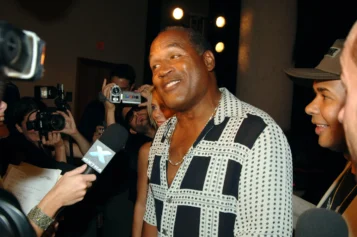A diverse group of pastors in Franklin, Tennessee, has taken a different approach to addressing the Confederate statue that stands tall in its downtown square, instead of tearing it down they helped build a different statue as part of the Fuller Story Project.
One of the pastors involved is Hewitt Sawyers, 73, grew up in the Jim Crow South, where “separate but equal” was the norm. Franklin, Tennessee, which is about 20 miles south of Nashville, is where Sawyers calls home.
“I had to go to a colored restroom. I had to go into the alleys and knock on a restaurant door and take food out of a back door,” said Sawyers indicating Black people knew their place in the city’s society.
Serving as a constant reminder of these societal strictures is a 30-foot tall confederate statute erected in 1899 by the United Daughters of the Confederacy in the city’s town square. Sawyers says the statue symbolized people like him were not welcome downtown. “It represented a situation where this was my place, and I didn’t want to see that as my place and my plight in Franklin and Williamson County,” said Sawyers.
The Confederate statue in Franklin, a city that is about 6.6 percent African-American today, has been a fixture in the town square for more than a century, but on Aug. 12, 2017, the day white nationalists stormed Charlottesville, Virginia, for a rally to protect one of the city’s Confederate statues, some Franklin residents worried if something could happen closer to home.
Around the same time, Pastor Kevin Riggs, who is white, took part in a prayer vigil in response to Charlottesville. “All of that was on my mind when I spoke, so I said something about relocating or removing the statue,” said Riggs.
Riggs’ comments caught the attention of other pastors in the city, including Black pastors, Chris Williamson and Hewitt Sawyers. After several meetings, the group of diverse pastors felt God was telling them to do something about the city’s Confederate statue. While many cities considered removing statues altogether, these pastors went in a different direction.
“I wanted that monument down because of the reminder that it gave me, but the Lord moved in a mighty way to change my heart,” said Sawyers. “Instead of tearing something down, let’s put something up and that seemed to resonate with us, this may be a different way to approach this and something that can bring the community together,” said Riggs.
After a month of strategizing, the beginnings of the Fuller Story Project started taking shape. The pastors sought all the necessary government approvals to erect a monument opposite to the confederate statue to tell the full story of the Civil War, but this new monument would include the story of African-Americans and the role they played during the war.
“This Fuller Story wouldn’t have worked because, as Kevin said, it needed Black guys, but the Black guys would say, it needed white guys because they wouldn’t have just listened to us if Hewitt and I went into City Hall to say this is what we want to do because that’s been done before,” Williamson said.
The community largely supported the group’s efforts, but not everyone was on board at first. “There were people in the Black community who didn’t feel like we were doing enough, and we should have taken the statue down, but I continue to say that was not our assignment,” said Sawyers.
It took the pastors about four years to raise $162,000 in donations to pay for the markers and statue to be built by sculptor Joe Frank Howard. At the unveiling before a large crowd of hundreds of people, tears were shed as the moment signified a new era for the city’s Black residents.
“For us as Black people, there was a sense of ownership which we haven’t felt in this community especially downtown in the square since the city was founded in 1799,” said Williamson.
The completed statue depicts a Black Civil War soldier part of the United States Colored Troops. There were 200,000 Black soldiers serving in the Union army and navy, most of them had been enslaved. The Black soldiers were paid and treated less than white soldiers during the war and wore old uniforms and used poor equipment.
“At first, they didn’t understand why he wasn’t on a 30-foot pedestal like the Confederate statue until we mentioned we didn’t want him that high, we wanted him among the people,” said Williamson of the creation of the statue.
“We didn’t all take slavery lying down but that is not the narrative that is told especially here in the South so that’s why we wanted this man with this gun in his hand, the foot on the tree stump recognizing the tree of bondage has been cut down,” he went on to say.
Sawyers says now that the Fuller Story Project has erected the statue of a Black soldier across the street from the Confederate statue, he feels more at ease venturing downtown and entering the town square.
“I didn’t feel like there was anything downtown for me because of what I had experienced as a child growing up, now downtown belongs to me too,” Sawyers said.
To read more stories like this, visit AtlantaBlackStar.com


